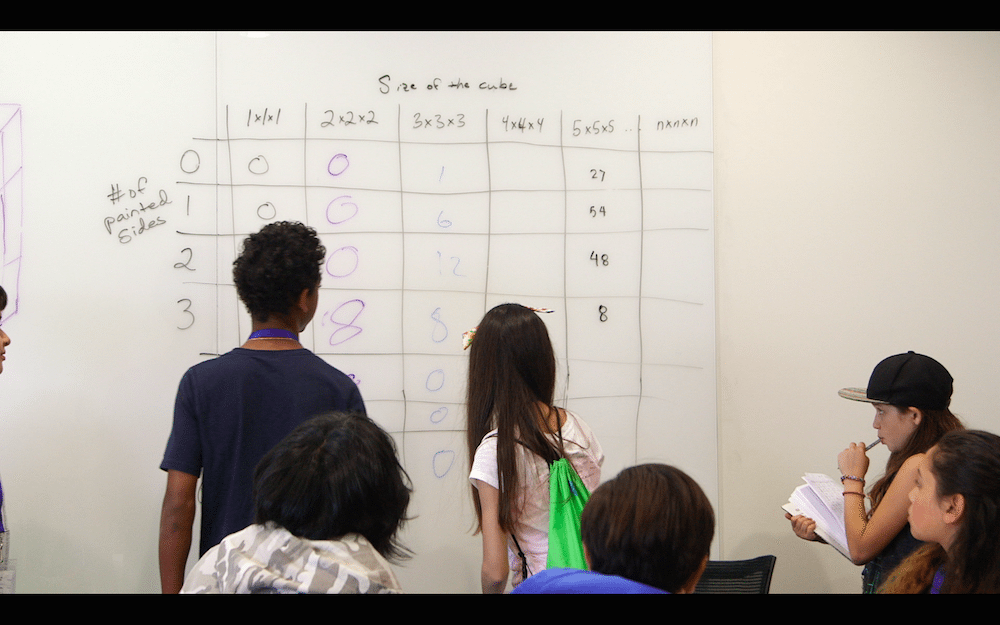
It may seem obvious that students achieve at higher levels when teachers believe in them, but few would have predicted how much a simple message from teachers can change students’ whole trajectories and achievement.
A study many years ago that probably would not be allowed today, showed something remarkable about teacher beliefs. Researchers told teachers that some classes of students – across six grade levels – had been tested and were capable of greater intellectual growth than other students. In reality, those students were of the same achievement levels as other students and were randomly chosen for the classes. At the end of one year the students’ scores on IQ tests matched the teachers’ false beliefs. When teachers were told that students had higher intellectual ability their students scored at significantly higher levels on IQ tests than students whose teachers were not told anything (Rosenthal and Jacobs, 1968). This study is a powerful illustration that teachers’ expectations and beliefs about students matter.
In a much more recent study, researchers illustrated just how powerful a single message can be. Hundreds of students were involved in an experimental study of high school English classes. All of the students wrote essays and received critical diagnostic feedback from their teachers, but half the students received an extra sentence on the bottom of the feedback. The students who received the extra sentence achieved higher grades a year later, even though the teachers did not know who received the sentence and there were no other differences between the groups. It may seem incredible that one sentence could change students’ learning trajectories to the extent that they achieve at higher levels a year later, with no other change, but this was the extra sentence:
I am giving you this feedback because I believe in you.

Students who received this sentence scored at higher levels a year later. This effect was significant for students of color, who often feel less valued by their teachers (Cohen & Garcia, 2014). I share this finding with teachers frequently, and they always fully understand its significance. I do not share the result in the hope that teachers will add this same sentence to all of their students’ work. That would lead students to think the sentence was not genuine, which would be counterproductive. I share it to emphasize the power of teachers’ words and teachers’ beliefs they hold about students, and to encourage teachers to instill positive belief messages at all times. Furthermore, belief in students alone is not enough (Shouse, 1996). Teachers must couple these beliefs with an academic environment that values open, growth mathematics , mistakes , and high quality assessments.
Teachers can communicate positive expectations to students by using encouraging words, and it is easy to do this with students who appear motivated, who learn easily, or who are quick. But it is even more important to communicate positive beliefs and expectations to students who are slow, appear unmotivated, or struggle. It is also important to realize that the speed at which students appear to grasp concepts is not indicative of their mathematics potential (Supekar et al, 2013). As hard as it is, it is important to not have any preconceptions about our students.
We must be open at all times to any student working hard and achieving at high levels.
Some students give the impression that math is a constant struggle for them and they may ask a lot of questions or keep saying they are stuck, but they are just hiding their mathematics potential and are likely to be suffering from a fixed mindset; often these students are scared to take a risk or to get anything wrong. Some students have had bad math experiences and messages from a young age or have not received opportunities for brain growth and learning that other students have, so they are at lower levels than other students. This in no way means they cannot excel with good mathematics teaching, positive messages, and, perhaps most importantly, high expectations from their teachers and parents.
You can be the person who turns things around for students and liberates their learning path. It usually takes just one person—a person whom students will never forget.
This article contains excerpts from Jo Boaler’s new book, Mathematical Mindsets: Unleashing Students’ Potential Through Creative Math, Inspiring Messages and Innovative Teaching
References
Boaler, J. (2015). Mathematical Mindsets: Unleashing Students’ Potential Through Creative Math, Inspiring Messages and Innovative Teaching. San Francisco, CA: Jossey-Bass.
Cohen, G. L., & Garcia, J. (2014). Educational Theory, Practice, and Policy and the Wisdom of Social Psychology. Policy Insights from the Behavioral and Brain Sciences, 1(1), 13-20.
Rosenthal, R., & Jacobson, L. (1968). Pygmalion in the classroom. The Urban Review, 3(1), 16-20.
Shouse, R. C. (1996). Academic press and sense of community: Conflict, congruence, and implications for student achievement. Social Psychology of Education, 1(1), 47-68.
Supekar, K.; Swigart, A., Tenison, C., Jolles, D., Rosenberg-Lee, M., Fuchs, L., & Menon, V. (2013). Neural Predictors of Individual Differences in Response to Math Tutoring in Primary-Grade School Children. PNAS, 110, 20 (8230-8235)
